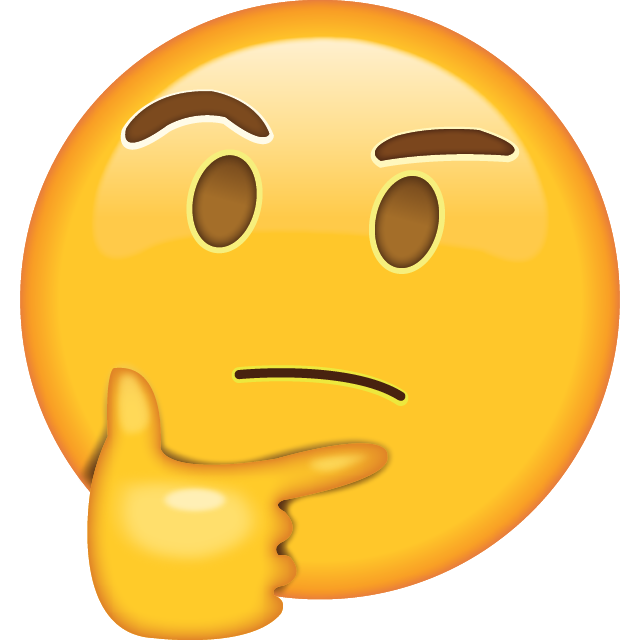
Bob Pegram
Member-
Posts
78 -
Joined
-
Last visited
Content Type
Profiles
Forums
Articles
FAQ
Tests
Classifieds
Store
Group Buys
Everything posted by Bob Pegram
-
I used to work for a Top 100 rated custom fitter. Almost all of those getting fitted wanted to know the 'why' of each step in the fittings. Leith Anderson, who I worked for, had that as his usual method. We were in Silicon Valley which may be atypical. Later, when Leith moved to Indiana, I worked for PGA Superstore. There a bigger percentage were not interested in the details of the fittings. However, the vast majority still wanted to know details. Because explaining the details was my default, that may have skewed my perceptions. I still don't understand why people wouldn't want to know the 'whys' of the fittings. I would run into the same differences when fising people's computers and/or tutoring them. I would offer to show them how to do their own software maintenance and call me less frequently and a few still didn't want to know how to save themselves money by calling me less.
-
Are we getting fit wrong? Crossfield thinks its a good possibility.
Bob Pegram replied to GolfSpy BOS's topic in Fittings
Tutelman explains a lot of the more technical details in golf. For example, when photos are taken of pros hitting driver shots it looks like the shaft is bent WAY forward towards the ball before impact. However, that is a function of the way a digital camera operates. It takes each line of the photo sequentially so for each line farther down the photo there is a split second delay and the shaft is farther towards the ball. If the digital camera is turned sideways, the photo doesn't show that erroneous shaft bend toward the ball before impact because it isn't really there. -
Are we getting fit wrong? Crossfield thinks its a good possibility.
Bob Pegram replied to GolfSpy BOS's topic in Fittings
Hwew is an example of a very thorough engineer's approach to golf: https://www.tutelman.com/golf/ It is the most thorough analysis of the golf swing, golf clubs, etc. I have ever seen. It is excellent. -
Are we getting fit wrong? Crossfield thinks its a good possibility.
Bob Pegram replied to GolfSpy BOS's topic in Fittings
Yeah. C.C. is expensive. I interviewed with them on the phone and I got that impression just from the interview. Later reviews proved my impression correct. I stressed proper fitting and enough time with each customer which I guess they didn't like. I wasn't interviewed by a fitter. I was interviewed by somevody in HR. -
Are we getting fit wrong? Crossfield thinks its a good possibility.
Bob Pegram replied to GolfSpy BOS's topic in Fittings
Just so you are aware, it can vary a lot depending on which fitter you are working with, especially in a big box store. I was more thorough than some. An independent fitter has to be good or he goes out of business. -
Are we getting fit wrong? Crossfield thinks its a good possibility.
Bob Pegram replied to GolfSpy BOS's topic in Fittings
Since we were in Silicon Valley, we catered to scientifically minded people like you. We would explain until you understood. A few customers didn't want to know, but they were the exception. -
Are we getting fit wrong? Crossfield thinks its a good possibility.
Bob Pegram replied to GolfSpy BOS's topic in Fittings
They are real. Leith Anderson who I worked for had a number of other club fitters on his emailing list. Companies (especially smaller or new ones) would sometimes send Leith new products for him to review in his emails. They knew he could influence other club fitters to try the new product if Leith gave it a good and thorough review. Leith had no control over the Golf Digest ratings. They had/have strict minimum requirements. When Leith moved to Indiana at the end of 2013 it took him a while to get back on the list. There is more politics and campaigning for Sectional PGA Teacher of the Year. I know because of the guy who shared the fitting facility with Leith. -
Are we getting fit wrong? Crossfield thinks its a good possibility.
Bob Pegram replied to GolfSpy BOS's topic in Fittings
There a number of steps. First, a preliminary measurement of wrist to floor. That is by no means an absolute way to determine club length. It is only a starting point. An alternate place to start would be to ask what is wrong with your existing irons and whether you think they are too long or too short, too upright, too flat, too heavy, too light, too flexible, too stiff. You may or may not know some (or any) of the answers to those questions. Either way a fitter would start with a club that, per your explanation and maybe our estimation, would be closer to fitting you. Obviously, we would watch how you swung that first club and make substitutions as indicated. We would keep going until you got to a club that you like, fit you relatively well, and got good results. At that point to fine tune it, we would put contact stickers on the face to see where you were making contact. We would look at ball flight, distance, spin, accuracy, etc. We may even ask what type of course(s) you play most often. For those who play the same course most of the time that can be important due to the playing characteristics of the course. I forgot to mention something very important. If your swing has a significant swing flaw. We would first ask if we can work on your swing a little so that we are fitting your best swing, not your worst swing. We don't want the club characteristics to work against you when you improve. During all of this we would be explaining why we are choosing the shafts, club heads, lengths, lies, so you understand what is going on. It was amazing how quickly we got good at spotting even minor swing flaws. We saw so many swings that those flaws that most people wouldn't notice stood out to us. Feel to ask other questions. By the way, I had previously worked for a Top 100 rated custom club fitter (Golf Digest ratings). He moved to Indiana from the SF Bay area so my job went away. The fittings we did were somewhat more sophisticated than any big box golf store and we made the clubs. The finished clubs weren't ordered from the factory like they were at the big box store. No factory can have the same attention to detail a good clubmaker has. At the big box store I would check the custom finished sets we received for proper specs before phoning the customer who had ordered them. Occasionally they were off. -
Are we getting fit wrong? Crossfield thinks its a good possibility.
Bob Pegram replied to GolfSpy BOS's topic in Fittings
I am replying by using a fitting example. I used to work as a fitter at PGA Tour Superstore. I guy about 6'5" came in and said he was sent by the PGA Pro who was giving him lessons. The guy had standard length clubs and did not have an upright swing. That is a bad combination. When he swung down he was way outside the ball and way too high off the ground. He would then pull the club in towards himself to make contact with the ball, cutting across the ball and slicing badly. If he had an upright swing it possibly could have worked, but he didn't. I fit him with very long clubs that he immediately hit it much better. I suggested graphite shafts to keep the club weight and swingweight from being too heavy. He didn't like that - assumed they would be too whippy or too "wimpy". I explained that graphite shafts can just as stiff as steel shafts, but lighter. Anyway, we ordered the overlength irons with steel shafts. He picked them up. and came back less than a week later at a time I wasn't scheduled and returned them saying the PGA Pro who sent him to us said the clubs didn't fit him. The PGA Pro sabotaged what he had initiated! Maybe he was afraid he wouldn't be able to keep milking money from the guy. Longer clubs promote a hook and work well when the golfer is big enough to handle them. We ended up selling the clubs for less in the returned clubs section. Whatever tall guy bought them got a good deal! -
Agree completely. I can still hit the ball accurately and can hit a few shorter par 5s in two (about 515 yards or less). That gives me the opportunity for a HIO on almost all par 3s, but only a few par 5s. Could hit it 550 or more in 2 shots when I was younger.
-
Same back issue here. 6'1" 36.5 inch putter. I have a high waist, short arms and stand more upright. Each one of those adds length.
-
Wow! that's a typo. I use a 36.5 inch putter.
-
When I lived in Redondo Beach, CA I would regularly play Harbor Park Golf Course, a full size 9 hole L.A. municipal course near San Pedro. It was very narrow in spots, not a typical muni. I now live in Silicon Valley and there aren't any full size 9 hole courses. San Jose Muni used to have a deal where, if you joined the club for $85 per year and got a handicap, you could tee off an hour after twight rates started on Thursdays and Fridays for nothing (no reservations allowed - 1st come, 1st serve). That went away with the arrival of Covid and has never come back. It was a great deal and was much better practice than going to the driving range even if I couldn't finish all 9 holes. Playing the front 9 of an 18 hole course works without eating up a lot of the day.
-
I think I can answer part of you question. NCAA golfers are (or were?) limited to 20 hours per week of practice. That slows down their skills development compared to others competing in non-NCAA tournaments instead of college. I don't remember if there were talks to possibly change or eliminate that limit and/or whether the limit stills exists. The USGA keeps changing ther rules when somebody figures out a non-standard method of hitting shots that works better. Back in the 1960's I almost switched to a croquet putter - face the hole and swing the putter between the legs - , but the USGA outlawed them. Sam Snead then used his regular putter between his legs with his left hand hish and his right hand closer to the head, but they outlawed that not long after. They have a long history of stopping the use of ingenuity. They rewaes conformists, not people who are smarter than they are.
-
I agree. I use a 46.5 inch putter so I can stand up straighter.
-
As Phil Mickelson pointed out some time ago, the 2010 groove rule actually hurts average players way more than the best players, pro or amateur. Pros and other very good players tend to spin the ball too much on short iron shots. The groove rule doesn't affect them much. On the other hand, average players need all the spin they can get around the greens. The groove rule hurts them quite a bit. The USGA doesn't think things through very well.
-
What is the link? It would interesting to see the argum,ents on bath sides. Thanks.
-
How do you know "bigger and stronger" has nothing to do with it? A bigger percentage of PGA Tour Pros work out than in the past. That would at least affect strength. It would interesting to find out what the median and average heights and weights are compared to 20 years ago. I don't know, but it wouldn't surprise me if the heights are more. In addition, launch monitors have helped improve technique which is another non-golf club and non-ball factor. Admittedly launch monitors are equipment of a sort.
-
1997 is too far back. When Titleist came out with the first solid ProV1 (as opposed to wound balls) the distance went up and, other than the longest hitters who do hit it farther, the typical drive distance has not gone up a lot. It has gone up a little. I am basing this on a Golf Digest article a couple of years ago (from memory).
-
Wrong! Launch monitors have shown that about 80 percent of the initial ball direction is from face angle and about 20 percent is from swing path direction. Before launch monitors the opposite was taught. The launch monitor data shows why, for example. if you aim down the right edge pf a fairway that curves gently to the right and hit with a square face you will stay just left of the trees, but if you open the face to hit a fade without adjusting your initial aim so it is to the left of your original line, you will hit it in the trees every time. I saw that happen in my foursome in the PGA Player Ability test last year. I was the only one who hit the fairway. My swing wasn't better. My knowledge let me aim cirrectly.
-
Looks like the last big jump was from going to solid balls from wound balls.
-
The average drive length of a tour pro hasn't changed much in the last 20-25 years for the vast majority. It is just a small percentage at the top who are bigger, stronger, willing to experiment and work harder than years ago. Penalizing pros (or anybody else) for working harder and succeeding stinks. The PGA did that to Phil Mickelson. He experimented and practiced with an almost 48 inch driver, learned to hit it straight and won the PGA Championship. Then the PGA Tour stabbed him in the back. Members of the players advisory board at the time said most pros had no problem with 48 inch drivers. Their story is now changing becuase the PGA Tour is run by dictators who don't want the players to have a say unless the PGA Tour agrees with the Players' suggestions ahead of time.
-
Can you imagine what the Masters would be like if they go to a shorter distance ball? All of the lengthened holes will be obsolete because they would then be too long.
-
Agree on making courses tougher to limit the long hitting advantage unless the golfer is extremely accurate. Disagree on BiF.






